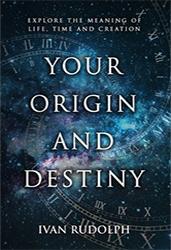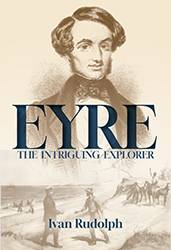Hypothetical
I would like to conjecture how Eyre might respond to Australian society today. I only attempt to do so because I have immersed myself over eight years in every word written by him and about him that is available, such that I feel I know him and how he thought. How would he respond to what he saw after a walk down the pretty streets of Adelaide? What would be his impression of modern Aborigines? Of course, in his day he was involved primarily with pure blood tribal Aborigines who were fit, generally healthy and bush savvy. But some of the principles he learnt would still apply.
His first response might be to ask where all the Aborigines were? He had hoped for a mixed society and would be disappointed to learn that many live in isolated communities on distant reserves. Many others prefer a rural lifestyle, which Eyre would relate to readily. However, he would be saddened to learn that there were few prominent indigenous stockmen and property owners across Australia, knowing as he did their natural skills. Then again, he would have been delighted with the Mabo ruling because he had suggested land rights himself, but had envisioned Aboriginal land much more closely associated with white settlements, a kind of interlaced patchwork. From such interwoven lands, the young Aborigines could have enjoyed traditional family life whenever they wished to return to the nearby community, yet would have had easy access to the rapidly developing world on their doorstep. They could then have interacted as far and freely as they chose to without losing or denigrating their proud personal identities.
In reality, the opportunity for this is long gone.
Eyre’s next question might be, “Why don’t I see more Aborigines in the trades?” Knowing their skilful fingers and practical intelligence, he would have expected them to feature strongly in trade work. He would have to be told that the isolation of many Aborigines in distant communities, and the cultural restraints exercised by sections of their older generation, were robbing today’s youth of a full education. Because education for Aborigines was one of Eyre’s “things”, he would soon be making some suggestions.
“Can’t a tract of land be bought near each city, declared Aboriginal land, and a good trade school be built on it? It would need to be as large as a university campus to allow for boarding houses. Strict controls to limit encroachment onto the indigenous land by outsiders would need to be enforced. But such a school would introduce its students to the city and enable them to practise their trade and serve apprenticeships there, yet still live on protected Aboriginal land.”
“Well there have been initiatives to bring Aborigines into the private sector by guaranteeing jobs, and some commercial enterprises are having success providing traineeships for indigenous students. Perhaps the campus you suggest could work in concert with these projects. Then again, Aborigines have been very successful in some sports and in the arts, not simply in trades and business. How might they be catered for?”
Eyre might conjecture: “I suppose sportsmen could be trained at a special facility at the same indigenous centre and play in local leagues with and against the wider community. It would be much easier to get quality coaches if the facility was near a city and easy to reach. Art and music could be taught in appropriate buildings too. All three disciplines, sport, art and music, could be focussed within the school towards building community spirit and lessening homesickness. A “balanced day” concept in education where academic subjects are interwoven throughout the day with these other activities would best suit the temperament of young Aborigines.”
The interviewer could respond: “An indigenous educational complex near a city might help solve one of the main problems; few teachers want to spend years in the isolation of an Aboriginal community a long way from a city.”
“Unless you spend time with them,” Eyre might point out, “purposely learning Aboriginal culture and engaging them in friendship, they won’t really want to learn from you. Teachers would have to undergo special training to teach in such colleges and be paid higher salaries for their trouble. I know this would prove costly, but what nation can afford to abandon to futile lives some of its most talented and best? There would be further things that could be trialled, such as offering a greater number of scholarships to good private schools and having personal tutors there to ease their way in. In addition, scholarships should be offered to overseas schools to engender internationalism. These opportunities could facilitate many a young Aborigine’s passage into the modern world.”
“Getting back to what you saw in Adelaide. Did anything else strike you?”
“I noticed that the Location has gone. What happened to it?” Eyre might ask.
“Historically speaking, towns and cities became alarmed at places such as the Location degenerating into shanty areas and encouraged indigenous people to move away, supposedly to help them escape white diseases and corrupting influences. Many Aborigines welcomed the move away from cities to community living in bush locations. Many others were already living in or near small bush towns or on old mission stations already and never had an interest in moving to the cities.”
“Yes, but where do Aborigines stay in modern cities such as Adelaide or Sydney?”
“Approximately three out of ten Aborigines are urbanised and live wherever they choose within the constraints of urban planning, but as indigenous numbers are small they are not very visible. Sydney now has an indigenous population second only to the Northern Territory, usually living in enclaves in suburbs such as Redfern and Cabramatta. These clusters are bound together by family and kinship networks.”
Eyre’s response would be typically thoughtful. “Well, you had better prepare for a new drift to the cities and I hope you can handle it better than we did.”
“What do you mean?”
“I have been told that most remote indigenous communities are not satisfactory places for young people to live in. I know the Aboriginal spirit and curiosity. The smartest and most adventurous will be attracted back towards the great southern cities. This will include the youth but also some adults wanting a better life. Personally, I did something similar. At just seventeen years old I sailed across the seas to seek new opportunities. The southern cities are comparatively rich and need to see this drift as a great opportunity to incorporate some of the more capable and adventurous Aborigines into them. Programmes must be devised and trialled, such as halfway houses, mentoring and modern English language courses available free to all citizens. Regional Aborigines would benefit from case officers in cities to befriend and lead them through the difficulties of obtaining training and employment. I had to play this role and negotiate with prospective employers when urging station owners to take on indigenous labour. Aborigines already urbanised successfully should be approached to participate as mentors right from the planning stages; they would be invaluable role models. Besides the incentive of helping their own people, they should be rewarded well financially.”
“I’m confused at your emphasis on indigenous people needing to be trained in the English Language, while I know that you communicated with them in their own language in the bush.”
“Because we are targeting two different groups of indigenous people,” Eyre might respond. “The communities are where we want everyone, the old as well as the young, to become part of local debate. Each stakeholder needs to be involved in positive community development, hence the need to use local dialects.”
“I can see that. To be successful, it must operate by consensus.”
“Yes. Unless the community adopts the development it will fail and is not worth trying to impose it on them. I found the Aborigines by nature to be very independent. Unless you capture their hearts and heads, you’re wasting your time trying to capture their hands.”
“But your model using Aboriginal languages in the communities has some problems. In your day you were dealing with tribes with a single language and culture, but today’s communities have commonly six or more Aboriginal languages represented. To sit the community down and have vernacular negotiations leading to a consensus is extraordinarily difficult. Creole, a kind of trade language spoken widely, is not developed enough to use in these discussions.”
“But don’t one or two indigenous languages predominate? Good interpreters and goodwill may bridge the gaps. My interpreters did a brilliant job.”
“Perhaps. There were around 250 languages in 1840 and that number has shrunk to approximately 30 today, so maybe it isn’t an insuperable problem.”
Eyre’s response would be emphatic. “Whatever it takes must be done.”
“OK. Now please explain your emphasis on Aborigines needing English for towns and cities.”
“That’s self-evident. They must be able to communicate with employers, in shops, in hospitals and so on, which means they must become facile in English. Therefore, to widen the options of Aboriginal children, they must be taught English in school, Learning a global language such as English has other advantages; for example it facilitates international travel and business opportunities. I took two young Aborigines back to England with me, and because they spoke English they were popular socially and one trained successfully in a trade school.”
“But nowadays indigenous kids are not getting the education they need, mainly because of poor school attendance.”
Eyre would leap on this failing. “The need for a good education must be discussed with parents until they support it for the sake of their children, otherwise the next generation will be socially inarticulate and unemployable in cities. That’s fine for kids who are happy where they are, but not for those who want to seek a modern life. Our responsibility is to welcome these youngsters. Regardless of cost, comprehensive support must be given right away to young Aborigines drifting to the cities, in order to provide more attractive mentoring than they find on the streets. Otherwise once they reach a city they could drift into a street subculture of grog, crime, violence, drugs and other harmful activities because that is where they would find acceptance and friendship. I remember my shock at seeing violent drunk Aborigines on the streets of Sydney when I first arrived in 1833.”
“And how might you see the interplay of urbanised Aborigines nowadays with family members that lived in distant communities?”
“The same as I had with the family and friends I had left behind in England when I was 17. I was free to return whenever I chose to, and it was comforting to have that option open, even though I didn’t take it up for a dozen years.”
We will leave this imaginary conversation. Eyre would no doubt have continued to bring forward suggestion after suggestion just as he did when the people and the situation were very different. When one avenue failed, as did some of the proposals he made in the 1840s, there were always other creative possibilities to attempt.
Eyre never expected it would be easy to develop successful policy. He commented: “I am aware that the subject of the Aborigines is one of a very difficult and embarrassing nature in many respects, and I know that evils and imperfections will occasionally occur, in spite of the utmost efforts to prevent them. No system of policy can be made to suit all circumstances connected with a subject so varied and perplexing.”
We must not in turn minimise the challenges; the road to Aboriginal progress is fraught with difficulties, but difficulties are never a reason not to be trying. As Eyre expressed it: “From a long experience, and an attentive observation of what has been going on around me, I am perfectly satisfied that unless some great change be made in our system, things will go on exactly as they have done!”
It is sobering that his statement, written in 1845, rings just as true today.



